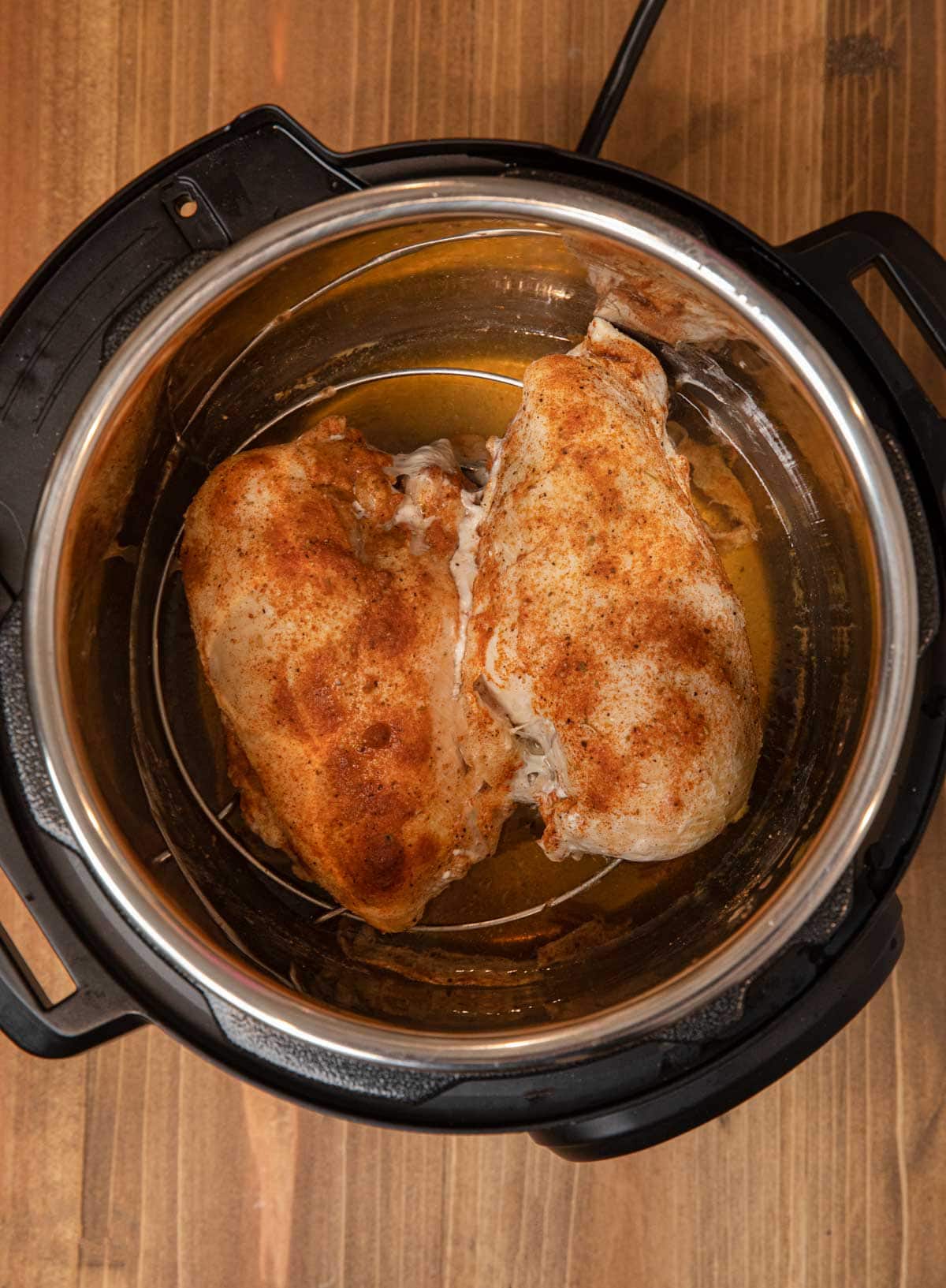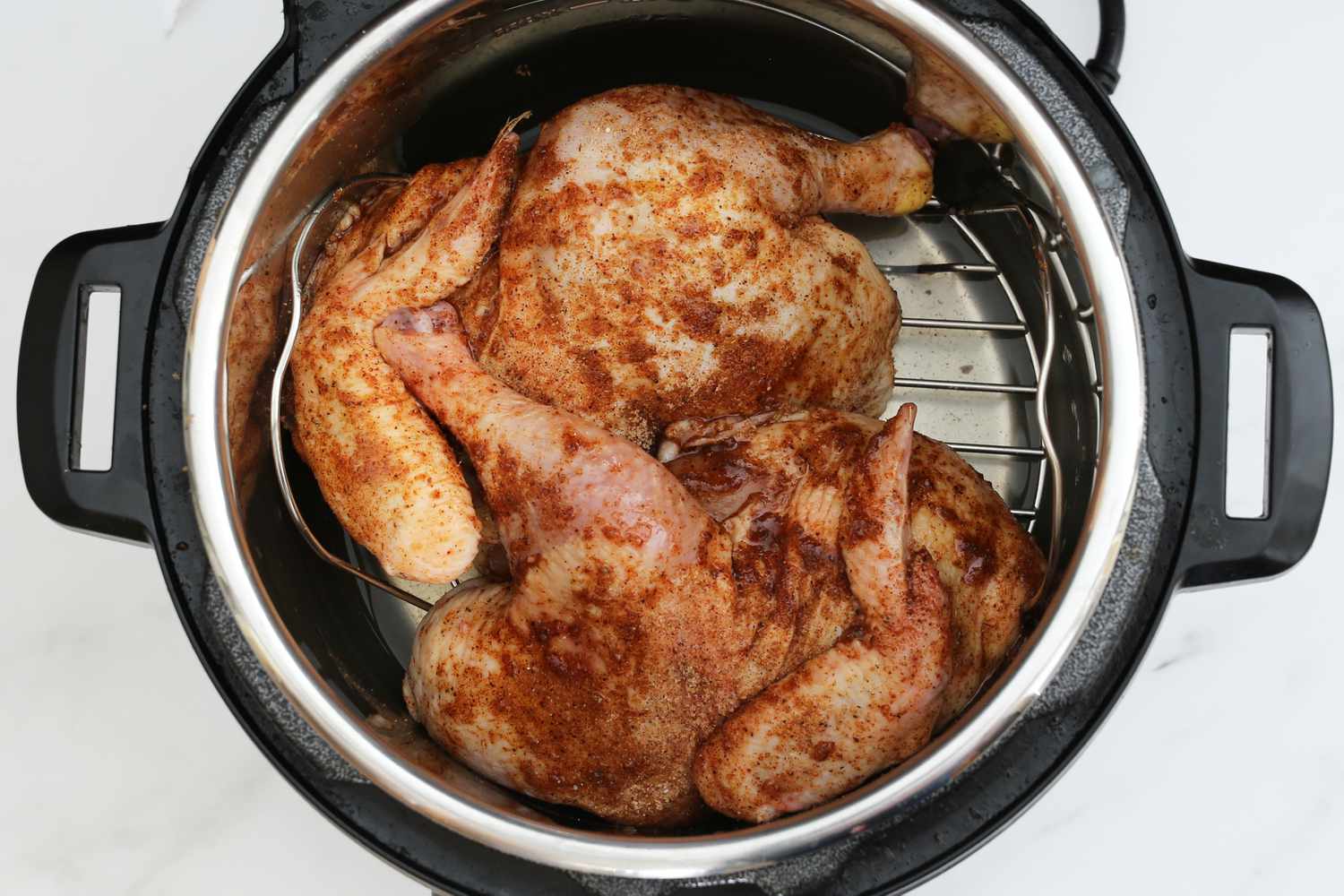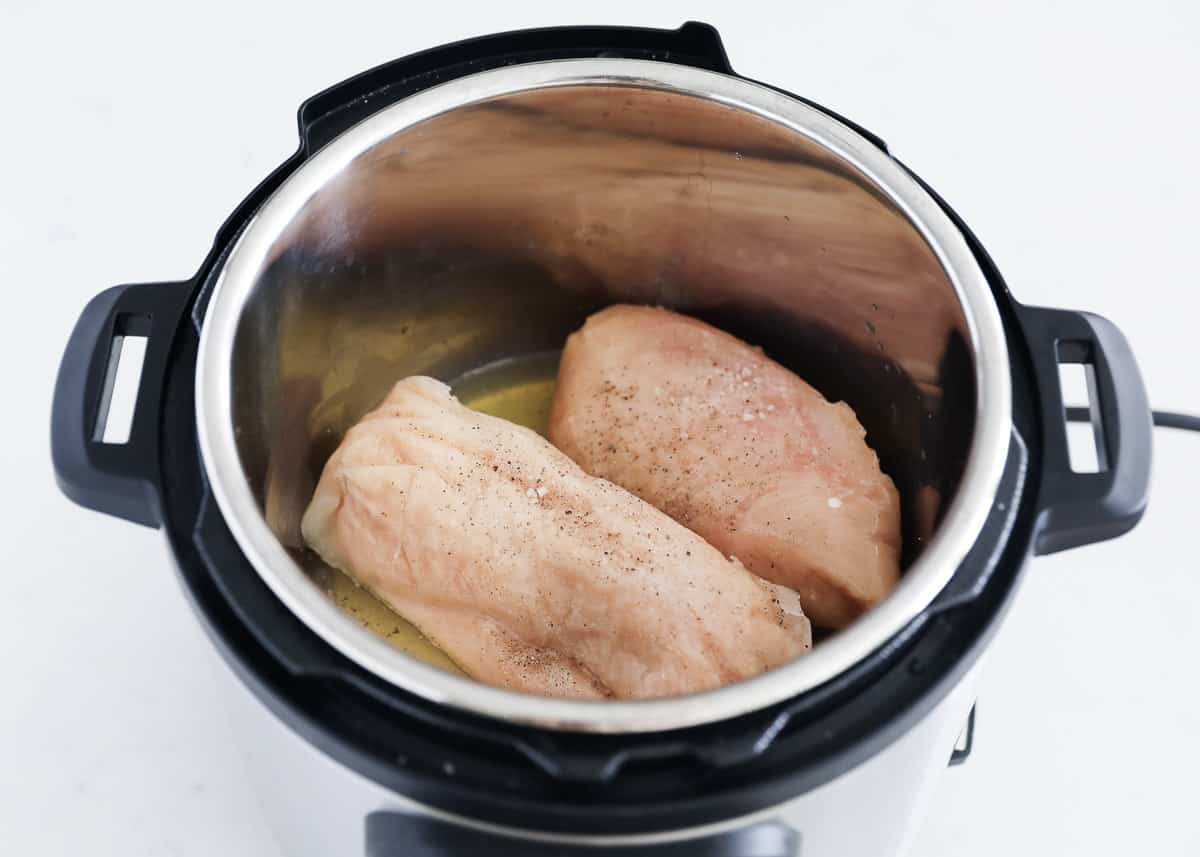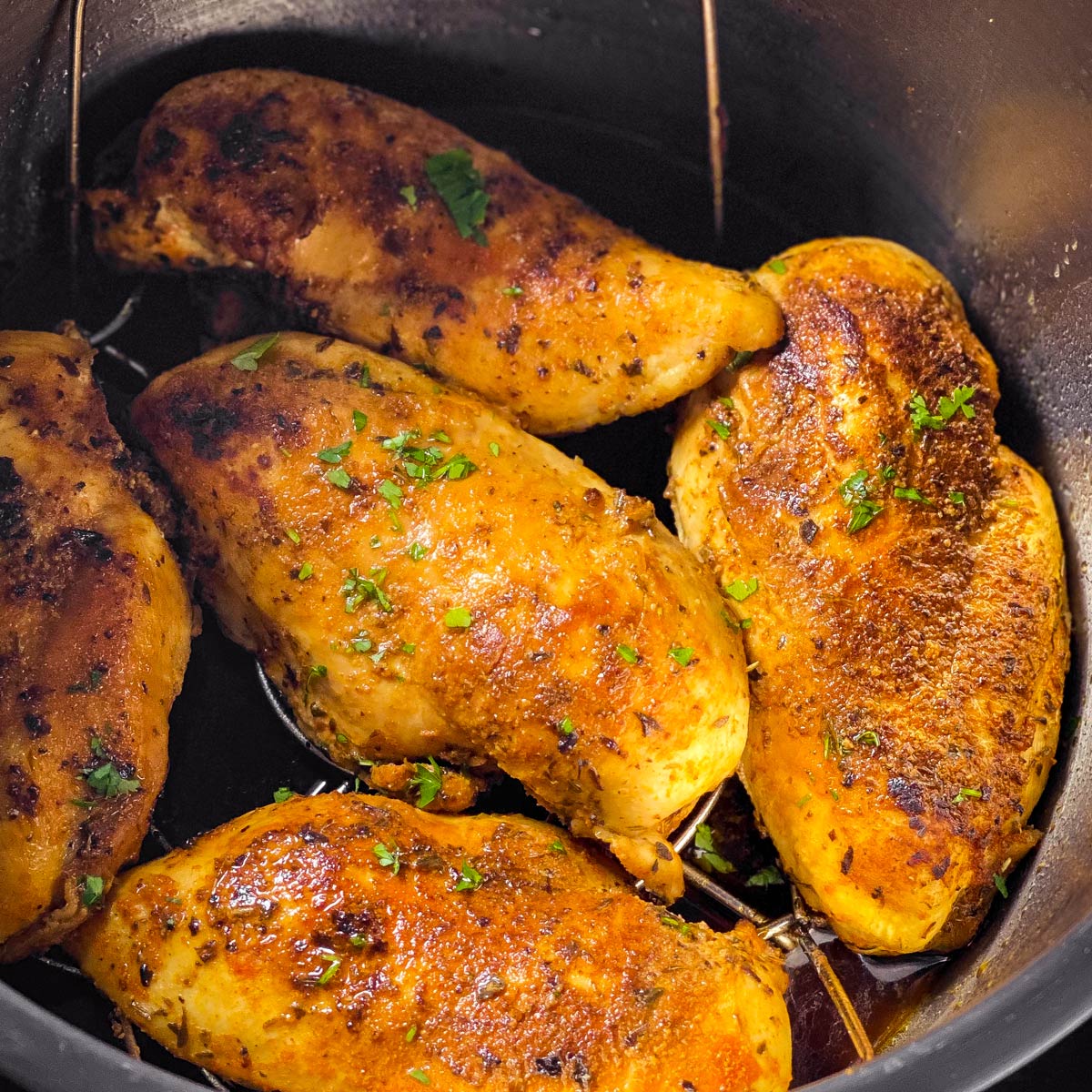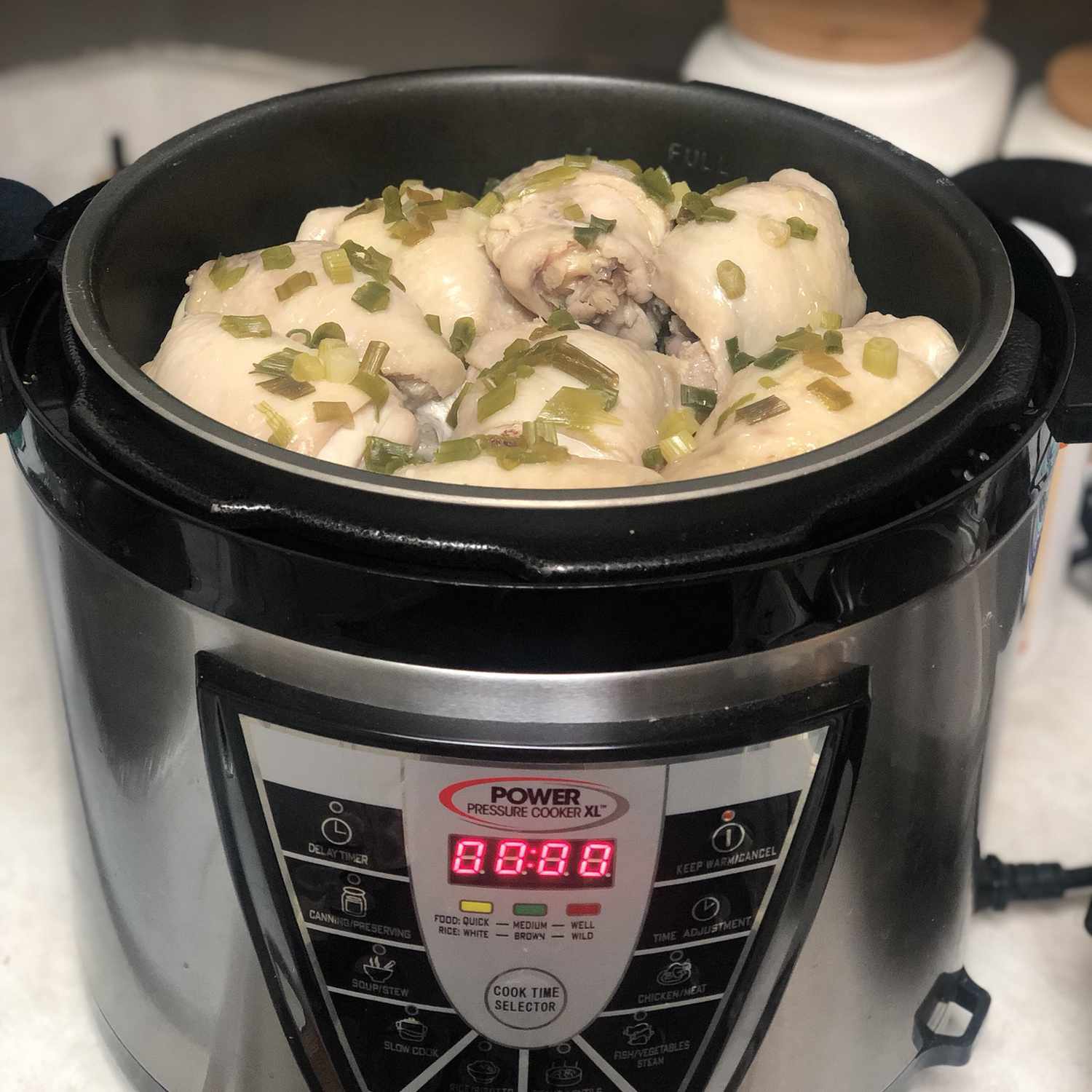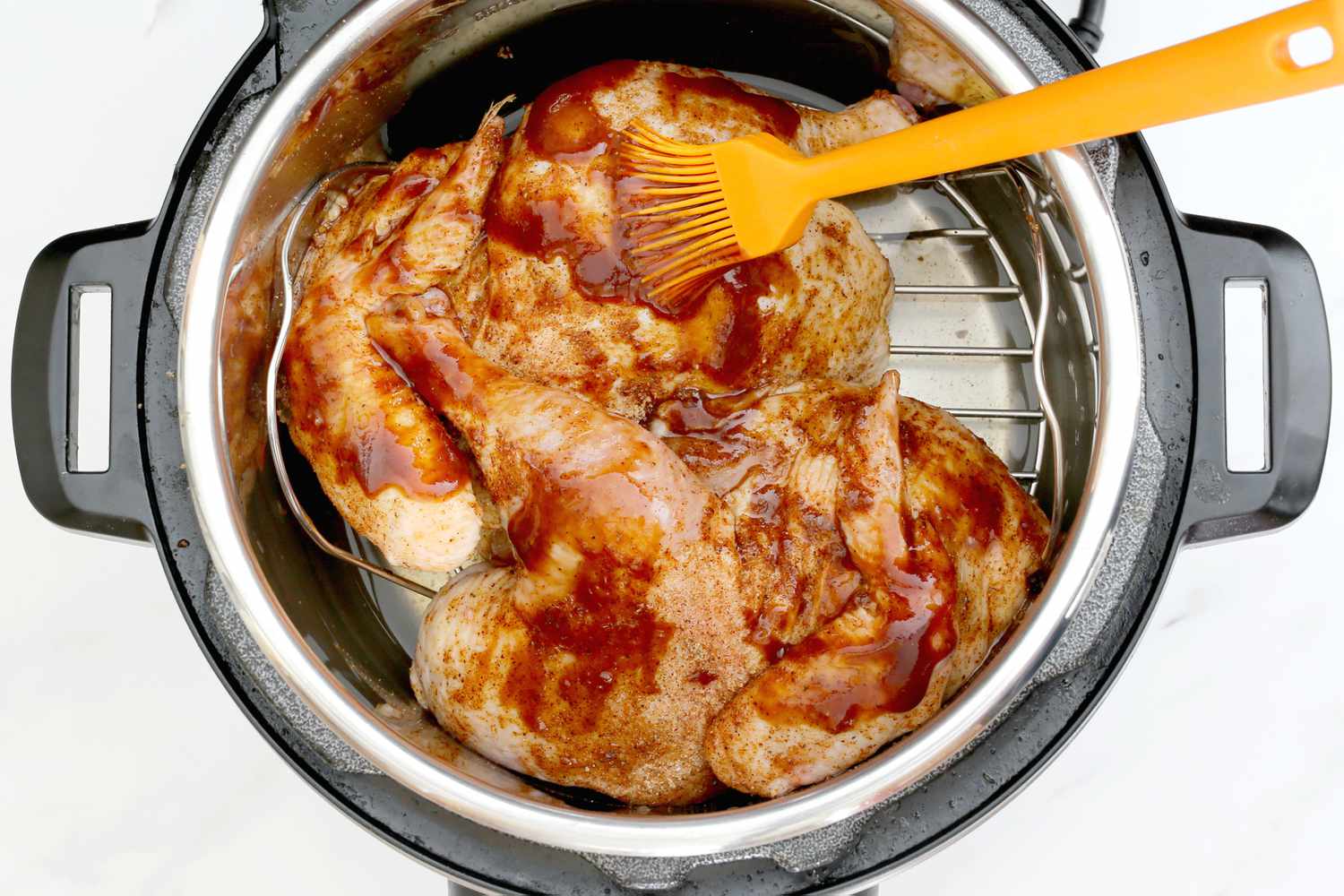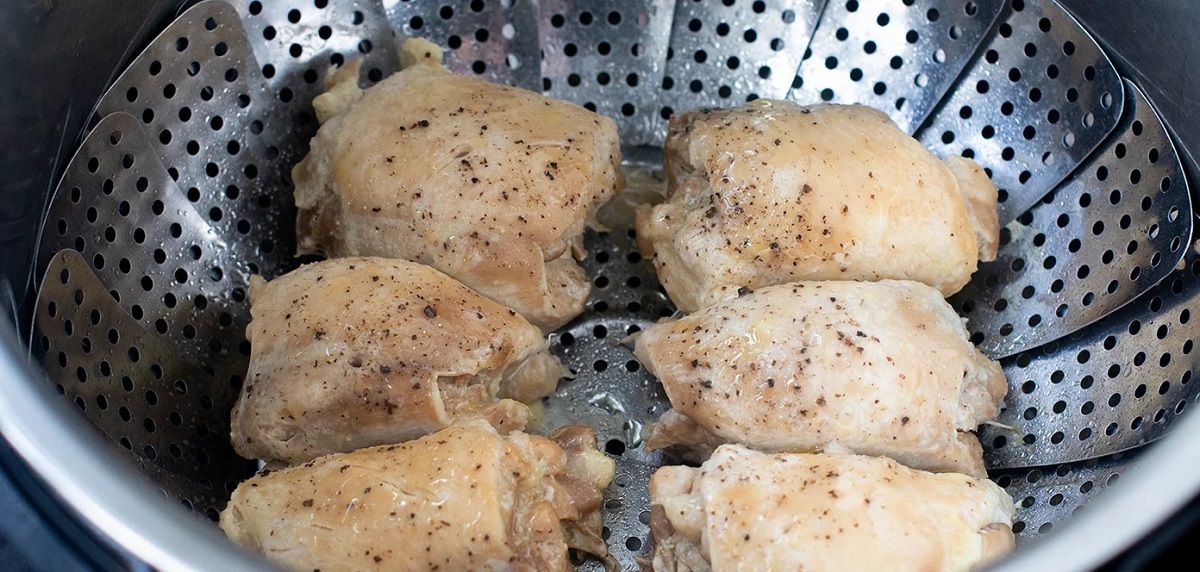Introduction
Welcome to the world of electric pressure cooking! Cooking chicken in an electric pressure cooker is a convenient and efficient way to enjoy tender and juicy meals in no time. Whether you are a busy professional or a home cook looking for a quick and delicious dinner, an electric pressure cooker can be your best friend in the kitchen.
Electric pressure cookers have gained immense popularity in recent years due to their ability to cook meals quickly using high-pressure steam. These devices seal in the flavors and nutrients, resulting in moist and flavorsome chicken dishes. However, achieving the perfect temperature for cooking chicken in an electric pressure cooker is crucial for food safety and retaining the delectable taste.
In this article, we will explore the optimal temperature to cook chicken in an electric pressure cooker and provide you with essential tips and recommendations for achieving the best results. Whether you are preparing a whole chicken, chicken breasts, or chicken thighs, we’ve got you covered with expert advice and guidelines.
So, let’s dive into the world of electric pressure cooking and discover the secrets to perfectly cooked chicken dishes that will impress your family and friends!
Understanding the Electric Pressure Cooker
Before we delve into the specifics of cooking chicken in an electric pressure cooker, it’s essential to understand how this remarkable kitchen appliance works. The electric pressure cooker is a modern take on the traditional stovetop pressure cooker, offering convenience and user-friendly features.
At its core, an electric pressure cooker is a sealed pot that utilizes steam pressure to cook food at a higher temperature than conventional cooking methods. It consists of a heating element, a pressure release valve, a locking lid, and a control panel that allows you to adjust temperature, pressure, and cooking time.
When you set the desired cooking time and pressure level, the electric pressure cooker heats up, generating steam inside the pot. As the steam builds up, it creates pressure, which increases the boiling point of water. This higher temperature and pressure cook the food faster and result in tender and flavorful dishes in a fraction of the time it takes with traditional cooking methods.
Electric pressure cookers typically offer different pressure settings, including low pressure (around 6 to 8 PSI) and high pressure (around 10 to 12 PSI). The pressure level you choose depends on the type of dish you’re preparing and the desired tenderness of the chicken.
In addition to the pressure settings, most electric pressure cookers also allow you to adjust the temperature and cooking time to achieve precise results. By understanding how to manipulate these settings, you can optimize your cooking process and create delicious chicken dishes that suit your personal preferences.
Now that we have a basic understanding of how an electric pressure cooker operates, let’s explore the key factors to consider when cooking chicken in this versatile appliance.
Factors to Consider
When it comes to cooking chicken in an electric pressure cooker, there are several factors that you should take into consideration to ensure optimal results. These factors include the size and cut of the chicken, the desired level of tenderness, and the recipe you’re following. Let’s explore each factor in detail:
1. Size and Cut of Chicken: The size and cut of the chicken will influence the cooking time and temperature. Smaller pieces, such as chicken breasts or drumsticks, will cook faster than larger pieces, like a whole chicken. It’s important to adjust your cooking time accordingly to avoid overcooking or undercooking the chicken.
2. Desired Level of Tenderness: Consider how tender you want your chicken to be. Cooking it at higher temperatures and longer times will result in more tender meat, while shorter cooking times will yield firmer results. It’s a matter of personal preference, so experiment with different cooking times to find the level of tenderness that suits you.
3. Recipe Guidelines: If you’re following a specific recipe, be sure to follow the recommended cooking instructions provided. Some recipes may require specific pressure levels and cooking times to achieve the desired flavor and texture. Always consult the recipe guidelines to ensure the best outcome.
4. Altitude: Altitude can affect the cooking time and pressure required in an electric pressure cooker. If you live at higher elevations, you may need to adjust the cooking time and pressure levels to compensate for the lower boiling point of water. Consult the manufacturer’s guidelines or recipe recommendations for altitude adjustments.
5. Marinades and Seasonings: If you’re using marinades or seasonings, take into account that they may impact the cooking process. Some ingredients, like acidic marinades, can tenderize the meat faster, while others may require additional cooking time to infuse flavors. Adjust your cooking time accordingly to ensure the chicken is properly cooked and flavorful.
By considering these factors and making the necessary adjustments, you can achieve succulent and perfectly cooked chicken dishes in your electric pressure cooker. Let’s now explore the recommended temperature and cooking time for various chicken cuts.
Recommended Temperature and Cooking Time
When it comes to cooking chicken in an electric pressure cooker, the recommended temperature and cooking time will vary depending on the cut of chicken and the desired level of tenderness. Here are some general guidelines to help you achieve delicious and perfectly cooked chicken:
1. Whole Chicken: Cooking a whole chicken in the electric pressure cooker requires setting the temperature to high pressure. For a 3-4 pound chicken, a typical cooking time would range from 25 to 30 minutes per pound. So, for example, a 3-pound chicken would need approximately 1 hour to cook thoroughly. Allow for natural pressure release for about 10-15 minutes before opening the cooker.
2. Chicken Breasts: Chicken breasts are a popular cut, and they can be cooked relatively quickly in an electric pressure cooker. For boneless, skinless chicken breasts, set the pressure to high and cook for approximately 6-8 minutes per inch of thickness. For example, if your chicken breast is one inch thick, set the timer for 6 minutes. Allow for a quick pressure release after cooking to ensure the chicken remains tender.
3. Chicken Thighs and Drumsticks: Dark meat cuts like chicken thighs and drumsticks are more forgiving and can withstand longer cooking times. For bone-in chicken thighs or drumsticks, cook at high pressure for around 10-12 minutes per inch of thickness. Ensure the internal temperature of the chicken reaches 165°F (74°C) for safe consumption.
4. Ground Chicken: Ground chicken can be used in various dishes like meatballs, burgers, or chili. When cooking ground chicken, set the pressure cooker to high pressure and cook for around 8-10 minutes. Make sure to crumble the meat prior to cooking to ensure even cooking throughout.
These cooking times are general recommendations, but it’s important to remember that factors such as the size and thickness of the chicken pieces may require you to adjust the cooking time accordingly. Always use a reliable meat thermometer to check the internal temperature of the chicken, ensuring it reaches a safe minimum of 165°F (74°C).
Now that we have explored the recommended temperature and cooking times, let’s delve into the differences between high pressure and low pressure cooking in an electric pressure cooker.
High Pressure vs. Low Pressure Cooking
When using an electric pressure cooker, you have the option to cook your chicken at either high pressure or low pressure. The choice between the two depends on the specific recipe and desired outcome. Let’s explore the differences between high pressure and low pressure cooking:
High Pressure Cooking: High pressure cooking is the default setting on most electric pressure cookers. It uses higher steam pressure and temperature to cook food faster. High pressure is ideal for cuts of chicken that require tenderizing or thorough cooking, such as whole chicken, chicken breasts, and bone-in chicken pieces. It’s also suitable for recipes that require quicker cooking times or when you’re in a time crunch.
Low Pressure Cooking: Low pressure cooking is an option available on some electric pressure cookers. It operates at a slightly lower steam pressure and temperature compared to high pressure. Low pressure is useful for delicate cuts of chicken, such as boneless and skinless chicken breasts, that require gentler cooking. It helps maintain the chicken’s moisture, resulting in tender and juicy meat. Low pressure is also suitable for recipes that call for slower cooking or when you prefer a milder cooking method.
When using low pressure cooking, keep in mind that it may require longer cooking times compared to high pressure cooking. Adjust your cooking times accordingly, and always use a meat thermometer to ensure the chicken reaches a safe internal temperature of 165°F (74°C).
Additionally, some electric pressure cookers have a “Poultry” setting that automatically adjusts the pressure and cooking time specifically for cooking chicken. This can be a convenient option when you’re unsure of the optimal settings for a particular chicken recipe.
Ultimately, the choice between high pressure and low pressure cooking depends on your preference, the specific cut of chicken, and the desired outcome. Experimentation and experience will help you determine which cooking method works best for different recipes and personal taste preferences.
Now that we have explored high pressure and low pressure cooking methods, let’s move on to discussing the recommended cooking times for different cuts of chicken.
Cooking Different Cuts of Chicken
When it comes to cooking chicken in an electric pressure cooker, different cuts of chicken may require slightly different cooking times and techniques to achieve the desired results. Let’s explore some popular chicken cuts and how to cook them in an electric pressure cooker:
1. Whole Chicken: Cooking a whole chicken in an electric pressure cooker can be a time-saving alternative to traditional oven-roasting. Place the whole chicken on the trivet inside the pressure cooker and add some liquid, such as chicken broth or water, to create steam. Set the pressure cooker to high pressure and cook for about 6-7 minutes per pound. After the cooking time is up, allow for a natural pressure release for a few minutes before removing the lid. Ensure the chicken reaches an internal temperature of 165°F (74°C) for safe consumption.
2. Chicken Breasts: Boneless, skinless chicken breasts cook relatively quickly in an electric pressure cooker. Place the chicken breasts in the pressure cooker, add some liquid, and set the pressure to high. For fresh chicken breasts, cook for about 6-8 minutes per inch of thickness. Frozen chicken breasts will require a slightly longer cooking time of about 10-12 minutes per inch. Use a quick pressure release after cooking to maintain the juiciness of the chicken.
3. Chicken Thighs: Chicken thighs are known for their tenderness and rich flavor. To cook bone-in chicken thighs, ensure the skin is removed for better pressure penetration. Place the chicken thighs in the cooker, add liquid, and set the pressure to high. Cook for about 10-12 minutes per inch of thickness. For boneless, skinless chicken thighs, reduce the cooking time to about 8-10 minutes per inch. Use a quick pressure release after cooking to preserve the moistness of the chicken.
4. Drumsticks: Chicken drumsticks are a popular choice for finger-licking meals. Place the drumsticks in the pressure cooker, add liquid, and set the pressure to high. Cook for about 10-12 minutes per inch of thickness for bone-in drumsticks. For boneless drumsticks, reduce the cooking time to about 8-10 minutes per inch. After cooking, use a quick pressure release to retain the drumsticks’ juiciness.
These are general guidelines, and cooking times may vary depending on the size and thickness of the chicken pieces. Always check the internal temperature of the chicken with a meat thermometer to ensure it reaches a safe minimum of 165°F (74°C).
Now that we’ve covered the different cuts of chicken, let’s move on to some essential tips for cooking chicken in an electric pressure cooker.
Tips for Cooking Chicken in an Electric Pressure Cooker
Cooking chicken in an electric pressure cooker can yield delicious and flavorful results. To ensure success, here are some essential tips to keep in mind:
1. Season the Chicken: Before placing the chicken in the pressure cooker, season it with your favorite herbs, spices, and marinades. This will infuse the meat with delicious flavors as it cooks under pressure.
2. Use the Trivet: Placing a trivet or a steamer basket at the bottom of the pressure cooker can elevate the chicken and prevent it from sticking to the bottom. It also helps the chicken cook more evenly.
3. Add Sufficient Liquid: To create steam and build pressure in the cooker, always add an appropriate amount of liquid such as water, broth, or marinade. Follow your pressure cooker’s guidelines for the minimum required liquid amount.
4. Avoid Overfilling: Do not overfill the pressure cooker with chicken pieces. Leave enough space for the steam and pressure to circulate freely. It’s better to cook chicken in batches if you have a large quantity, rather than overcrowding the cooker.
5. Optimal Cooking Time: While pressure cooking reduces cooking times significantly, it’s crucial to follow the recommended cooking times for each cut of chicken. Undercooking can lead to unsafe consumption, while overcooking can result in dry and tough meat. Adjust the cooking time based on the size and thickness of the chicken pieces.
6. Quick Pressure Release: For most chicken cuts, using a quick pressure release is ideal to avoid overcooking. However, in some cases, a natural pressure release may be recommended by certain recipes to allow for further tenderizing.
7. Check the Temperature: Always check the internal temperature of the chicken with a meat thermometer to ensure it reaches a safe minimum of 165°F (74°C). This is crucial for food safety and to ensure that the chicken is fully cooked.
8. Resting Time: Allow the chicken to rest for a few minutes after cooking to distribute the juices evenly throughout the meat. This will contribute to a more flavorful and tender result.
9. Experiment and Adjust: Each electric pressure cooker may have slight variations in cooking times and temperature. It’s important to experiment and adjust the settings based on your specific cooker and personal preferences for doneness and tenderness.
By following these tips, you can elevate your chicken dishes and create mouthwatering meals in your electric pressure cooker. Now, let’s move on to discussing safety precautions to keep in mind while using an electric pressure cooker for chicken.
Safety Precautions
While cooking chicken in an electric pressure cooker is generally safe and convenient, it’s essential to follow some safety precautions to ensure an enjoyable and risk-free cooking experience. Here are some important safety measures to keep in mind:
1. Read the Instruction Manual: Familiarize yourself with the manufacturer’s instructions and safety guidelines provided with your electric pressure cooker. Each model may have specific instructions and precautions that you need to follow for safe operation.
2. Use Recommended Liquid Amount: Always use the recommended minimum amount of liquid required by the pressure cooker. This ensures proper steam generation and maintains the pressure necessary for safe and effective cooking.
3. Properly Close and Seal the Lid: Ensure that the lid is properly closed and sealed before starting the cooking process. This prevents any steam from escaping and allows the cooker to reach the desired pressure for effective and safe cooking.
4. Avoid Overfilling: Do not overfill the pressure cooker with chicken or liquid. Overfilling can lead to clogging of the pressure release valve or food particles interfering with the sealing process. Leave sufficient space for the steam and pressure to build up.
5. Do not Force Open the Lid: Never force open the lid of the pressure cooker after cooking. Let the pressure release naturally or use the quick pressure release method following the manufacturer’s instructions. Forcing open the lid can result in dangerous steam burns.
6. Handle with Care: The pressure cooker and its contents will be hot during and after cooking. Use oven mitts or heat-resistant gloves when handling the cooker, releasing pressure, or removing the lid. Keep children and pets away from the hot cooker.
7. Follow Recommended Cooking Times: Ensure that the chicken is cooked to a safe internal temperature of 165°F (74°C). Use a meat thermometer to check for doneness. Undercooked chicken may pose risks of foodborne illnesses.
8. Clean and Maintain Regularly: Clean the pressure cooker thoroughly after each use, following the manufacturer’s instructions. Regular maintenance ensures its proper functioning and longevity.
9. Stay Alert and Attentive: Never leave the pressure cooker unattended while it is in use. Be aware of any signs of malfunction and discontinue use if you notice anything out of the ordinary.
By following these safety precautions, you can confidently cook chicken in your electric pressure cooker without compromising your well-being. Now, let’s move on to some frequently asked questions about cooking chicken in an electric pressure cooker.
Frequently Asked Questions
Here are some frequently asked questions about cooking chicken in an electric pressure cooker:
Q: Can I cook frozen chicken in an electric pressure cooker?
A: Yes, you can cook frozen chicken in an electric pressure cooker. However, note that it will require longer cooking times compared to fresh or thawed chicken. Ensure that the internal temperature reaches 165°F (74°C) for safe consumption.
Q: Can I brown the chicken before pressure cooking?
A: While an electric pressure cooker may have a sauté function for browning, it is not necessary to brown the chicken before pressure cooking. Pressure cooking will still result in flavorful and tender chicken without browning.
Q: How do I prevent the chicken from becoming dry?
A: To prevent dryness, ensure that you do not overcook the chicken. Follow the recommended cooking times and use a meat thermometer to check for doneness. Also, consider using marinades, broths, or sauces to infuse moisture and flavor into the chicken.
Q: Can I open the pressure cooker immediately after cooking?
A: It is generally recommended to allow for a natural pressure release for a few minutes before opening the pressure cooker. This helps to retain the moisture and tenderness of the chicken. However, if the recipe or cooking instructions indicate a quick pressure release, follow those guidelines.
Q: Can I use an electric pressure cooker for crispy skin?
A: Electric pressure cookers are not designed to achieve crispy skin on chicken. To achieve crispy skin, some recipes recommend transferring the pressure-cooked chicken to a separate oven or air fryer for a brief period to crisp up the skin. However, keep in mind that this step is optional and the chicken will still be flavorful and tender without crispy skin.
Q: How can I thicken sauces or gravies after pressure cooking?
A: To thicken sauces or gravies after pressure cooking, you can use techniques such as reducing the liquid on a stovetop or adding a cornstarch slurry. Follow the specific recipe instructions for achieving the desired consistency.
These are just a few common questions that come up when cooking chicken in an electric pressure cooker. If you have any specific concerns or queries, consult the manufacturer’s instructions or trusted online resources for guidance.
Now that we’ve covered frequently asked questions, let’s wrap up our discussion.
Conclusion
Cooking chicken in an electric pressure cooker can transform your mealtime, making it quicker, more convenient, and incredibly flavorful. By understanding the temperature and cooking times for different cuts of chicken, utilizing high or low pressure cooking methods, and following safety precautions, you can achieve outstanding results in your kitchen.
Remember to adjust the cooking times based on the size and thickness of the chicken, and always use a meat thermometer to ensure it reaches a safe internal temperature of 165°F (74°C). Season your chicken, add the appropriate amount of liquid, and take advantage of the trivet to elevate the meat while cooking.
Experiment with different marinades, herbs, and spices to enhance the flavors of your chicken dishes. And don’t forget to use the quick pressure release method or natural pressure release, depending on the recipe, to preserve the juiciness of the chicken.
Following these tips and precautions will help you create a variety of delicious chicken meals in your electric pressure cooker. So go ahead, unleash your culinary creativity, and enjoy tender, succulent, and flavorful chicken dishes cooked in your electric pressure cooker. Happy cooking!









